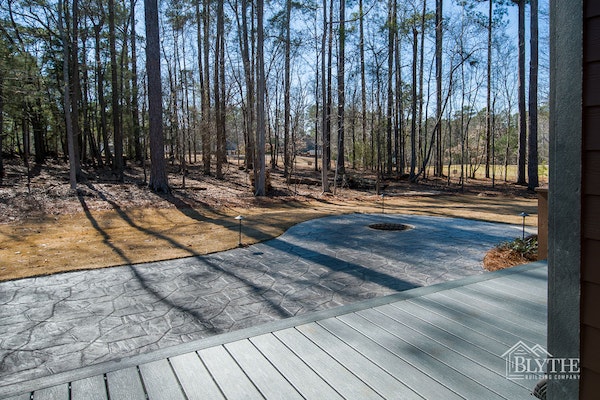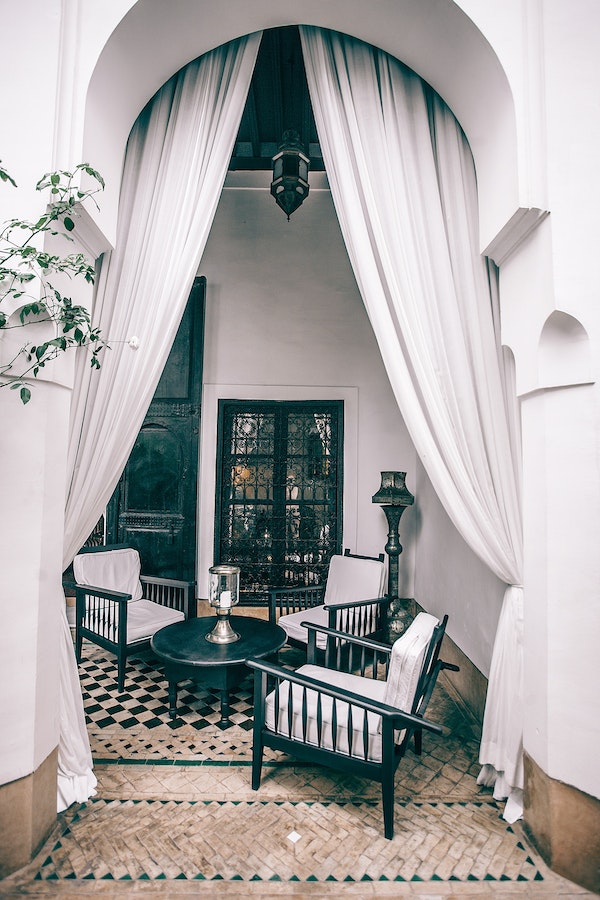Maybe your family is ready for plenty of fresh air living and outdoor entertaining. A patio is a perfect outdoor living space.
Why Have a Patio?
With the massive shift of our culture toward more outdoor living and relaxing spaces at home, patios are some of the most popular options. It’s easy to see why.
Advantages of having a patio
- Durability
- Low maintenance
- Less expensive, generally, than a deck
- Perfect to surround an in-ground pool
- Weather-resistant/weatherproof — no worries about rotting
- Adds value to your home
- Wonderful place to relax
- Ideal place for entertaining large groups
- Great spot for an outdoor kitchen
- Usually pet-proof
- Ground-level
Of course, there are some potential cons to having a patio. But if you design and maintain your patio, you should have an amazing place to enjoy the great outdoors for years to come.
Disadvantages of having a patio
- If you prefer to be higher off of the ground, a deck may be a better option
- Decks often have a higher resale value
- If not installed properly, patio pavers may warp or become uneven over time
- Concrete patios could crack or stain
- If your house is not on a slab, you may have to walk upstairs from the patio
Can’t decide on a patio, deck, or porch? No problem. Why not do all three and get the advantages of all of them!
Whether you just want to create a small patio space or a luxury patio, we’d love to share some of our favorite patio ideas to inspire you to create your own backyard patio oasis.

Stamped concrete patio with sunken fire pit and Trex decking
3 Patio Flooring Material Ideas
The very first thing to decide when planning your patio is the patio material. There are a lot of great options in patio materials. Each has its own advantages and disadvantages.
1. Concrete/stamped concrete
A concrete patio is extremely durable and often less expensive than other patio flooring options. One thing we love about concrete is you can stamp it and stain it to make it look like brick or stone pavers.
Stamped concrete patios pros and cons
Pros
- Many choices, colors, and finishes available
- Great aesthetics
- Good price
- Easy to install
- Durable
Cons
- Takes several days to cure.
- Can be slippery when wet, may need a sealer to improve traction near a pool
- Over time, it could crack, especially if you live in an area with wide temperature variations or ice.
- May need recoloring and sealing every 2-4 years
- Patching to match the original stamped concrete can be challenging.
2. Flagstone
A flagstone patio is gorgeous and a very popular choice today. It’s very low maintenance, especially if you set your flagstone in concrete. Then there is almost no maintenance or adjustments required to keep the flagstone level.
Flagstone patios pros and cons
Pros
- Very durable, lasting for centuries
- Very low maintenance required
- Easy to replace broken/cracked stones individually
- Comes in colors like red, blue, and beige.
- Better not to seal flagstone because sealing it can cause more deterioration in the sun
Cons
- Can be a bit challenging to install
- Can get too hot in the sun for bare feet
- May get slippery when wet
- Costs more than concrete, or pavers

3. Patio pavers (4 types)
Pavers are generally stones made from concrete, clay brick, porcelain, or natural stone. These interlocking pieces make a strong, flexible pavement.
For pavers vs. a concrete patio, the pavers are much more durable. They do cost more initially, but have a lot less maintenance and last longer, generally.
Best pavers for a patio
Concrete pavers come in a variety of colors, shapes, and sizes. Some concrete patio pavers mimic natural stone, brick, or even wood.
Brick pavers come in a multitude of sizes, colors, and finishes. You can even opt for brick pavers that interlock.
Porcelain pavers (or outdoor patio tiles) look like various types of natural stone or wood. They are especially moss/mold/mildew resistant. And they do not generally crack because they absorb almost no water. Because they are thin, they make an excellent covering for concrete or wood decks.
Natural stone pavers may be made of materials like travertine, slate, quartzite, limestone, bluestone, or granite. Many colors, patterns, sizes, and designs are available.
Paver patios pros and cons
Pros
- Walk on the finished surface immediately
- Design versatility and creativity
- Very durable
- Wide variety of colors and options
- Much less likely to crack than concrete
- Often have a lifetime warranty
- Low maintenance
- Easy to replace one paver if needed
- Can tolerate weather and temperature extremes
- Can be recycled and reused
- Pigments and aggregates generally go all the way through, so the color lasts forever
Cons
- Takes longer to install than concrete
- May require sealing occasionally for extra protection
- Can be more expensive upfront
- Weeds can grow up between pavers (avoid this by using polymer sand)
- A natural stone patio can get hot
Before deciding on your patio flooring material, be sure to speak with your custom builder about which options will be best for you and any recommendations they may have.
Ready to build a luxury patio to go along with your dream custom home in Lexington, SC?
At Blythe Building Company, we specialize in building luxury homes in the Lexington, SC area in the $650,000+ range.
Related
What Is the Best Decking Material for Luxury Decks?
Custom Decks: 15 Popular Deck Design Ideas
7 Reasons to Invest in a Luxury Pool for Your Custom Home







